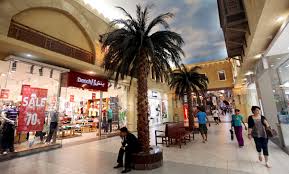 Shoppers never stop shopping, and retailers must evolve to stay ahead of the pack and keep consumers engaged.Today, brick-and-mortar stores need to innovate continually to capture their shoppers’ attention as e-commerce attracts a growing number of users. In addition, while consumer confidence was on the rise in over half of the countries Nielsen surveyed in the third quarter of 2013, including the U.S., shoppers remain focused on value for their money. As a result, retailers need to stand out to compete for consumers’ limited baskets.
Shoppers never stop shopping, and retailers must evolve to stay ahead of the pack and keep consumers engaged.Today, brick-and-mortar stores need to innovate continually to capture their shoppers’ attention as e-commerce attracts a growing number of users. In addition, while consumer confidence was on the rise in over half of the countries Nielsen surveyed in the third quarter of 2013, including the U.S., shoppers remain focused on value for their money. As a result, retailers need to stand out to compete for consumers’ limited baskets.
Innovation captures consumer interest and attention, attracting both new customers and faithful loyalists. It can provide retailers with an edge in five major shopper-need categories: convenience, choice or assortment, shopability, price-value, and brand equity.
However, there is no secret formula for successful ideas and certainly nothing that can be protected by patent. At the same time, breakthroughs are often copied quickly and easily. Consequently, retailers must innovate continually to grow and stay ahead.
Large-scale retail malls have been a growing trend across every maturing market in the GCC. Dubai has earned its position as the leading market in retail across the region to daate, however, a melting pot of different cultures, nationalities and languages in turn means a variety of consumer trends.
According to Jones Lang LaSalle’s recent report on the real estate market in Dubai, no significant retail mall space was completed in Q2 of this year, with total supply expected to reach 2.58 million sqm by the end of 2011. This impressive number is not anticipated to increase until at least 2014, as Dubai’s mall developers begin to focus on enhancing the existing retail environments in outlets they already have and tactics to ensure their survival.
Abu Dhabi, Beirut and Cairo have all been cited as emerging retail markets, focusing on the construction of purpose built regional and community malls, catering to their geographical catchment areas. Cities such as Doha, Jeddah and Muscat are regarded as maturing markets, moving into the space that Dubai once occupied when it began the development of large, multi-purpose malls. Dubai is now moving into the realm of convenience, highlighting the emirate’s need for malls which focus their offerings more acutely, paying close attention to their catchment communities and providing accordingly.
Consumers now think not only with their feet, but with their mobile phone as well. The ways in which retailers can communicate with their target audiences has increased significantly. The growth of e-commerce, including Facebook, Twitter and online retailing, has actually made retailers feel that they are not in control of what is going on with their consumers. Consumers are much more complex and sophisticated, they are saying what they want, when they want it and what they want to pay for.
GCC countries’ retail sectors are evolving at differing rates, with Dubai continuing to take the lead as the most mature market. As the dominance of malls grows in countries such as Saudi and Kuwait, the step-by step solution to driving footfall can help them to put a long-term strategy in place that will ensure the rate of development evolves alongside the consumer market.

